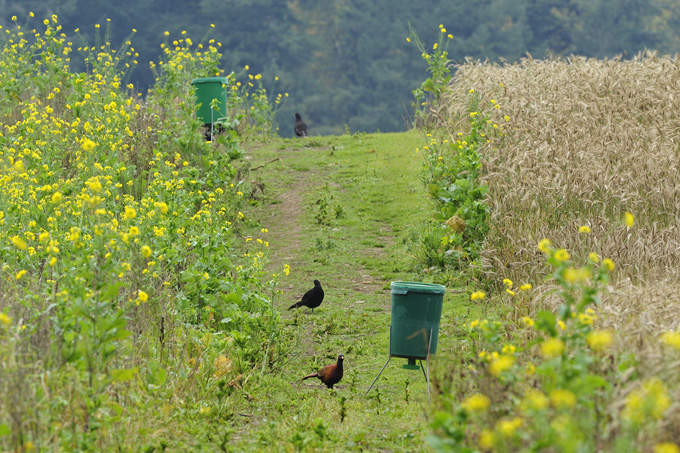The balance of game shot in the UK has undergone a considerable change in the past 50 years, as a study produced by the Game & Wildlife Conservation Trust (GWCT) shows. For several game species such as pheasant, red-legged partridge and roe deer, the numbers shot have increased in the past 50 years,, while for others such as grey partridge and brown hare the numbers shot have shown considerable declines.
The study relies on over five decades of data collection. Staff at the GWCT have been encouraging those who shoot to submit annual records to the National Gamebag Census since 1961, as well as extracting historical information from game books. These voluntary data have allowed us to evaluate trends in bag sizes for 45 species across a 50-year period (1966 to 2016). Combined with surveys undertaken by PACEC, the data have also served to estimate total UK bags for 2016.
Over the last 50 years, the number of pheasants shot has almost tripled, with an estimated 13-15 million birds shot in 2016. This increase pales in comparison to that of the number of red-legged partridges, with more than 25 times as many shot in 2016 as in 1966. In both cases, the rise in numbers shot has been driven by an increase in releasing that outweighs the relative growth of the bag. For example, there were seven times more pheasants released in 2016 than 50 years earlier, at a time when wild birds contributed much more to the bag.
In contrast, grey partridge bags declined throughout the study, resulting in a 77% drop across 50 years. This reflects the known nationwide collapse in their abundance and highlights the importance of continued monitoring and conservation work for this ‘barometer’ species.
As UK deer populations have risen and their ranges expanded, it is little surprise to see an increase in the number shot. In the space of 50 years, the roe deer bag has grown four times larger, now at around 50,000 animals, and the red deer bag has doubled to around 100,000 animals. The number of muntjac shot has increased by five times in just 25 years, reaching around 25,000 in 2016. The increase and then decrease in rabbit bags is likely to reflect the recovery of the UK rabbit population from the effects of myxomatosis in the middle of the last century, then its subsequent fall with the arrival of rabbit haemorrhagic disease in the late 1990s.
These findings provide an important insight into the way shooting has changed over time in the UK. They contribute to a Europe-wide initiative to develop a better understanding of the role of shooting in the context of species conservation and the sustainable use of wildlife. The author Nicholas Aebischer, who is Deputy Director of Research at GWCT, says “This work underlines the importance of collecting data systematically and over the long term. It is built upon the dedication of thousands of owners, keepers and land managers who have taken the trouble to report their bag records to us, and I cannot thank them enough. I emphasize that this is the first time that comprehensive estimates of bag sizes have been produced for the UK, so the work constitutes a major milestone.” The paper covering this work was published in the European Journal of Wildlife Research, which took the rare step of making it freely available to all online, such is its importance.
You can read the full paper here.

Download our essential FREE Guidelines for sustainable gamebird releasing, produced by GWCT Advisors.
Download FREE >